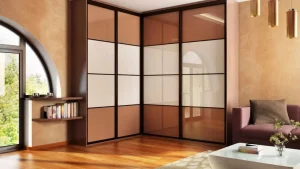In recent years, the way we live has been evolving rapidly, shifting from sprawling suburban homes to more compact and efficient living spaces. Whether you’re residing in a cozy studio apartment in the city or a smaller suburban home, comfort remains a top priority. Thankfully, innovations such as affordable boxed mattress options and multifunctional furniture are making it easier than ever to create a cozy, inviting living environment without sacrificing space or style. This trend, known as compact comfort, is reshaping how we think about home living, offering practical solutions for modern lifestyles.
The Shift Toward Smaller Spaces
Urbanization and changing lifestyle preferences have significantly influenced housing trends globally. Young professionals, retirees, and even families are embracing smaller spaces that prioritize quality over quantity. Cities around the world are seeing a rise in studio apartments and micro-units designed to maximize limited square footage. On the other hand, suburban homes are becoming more modest in size but packed with clever design features that emphasize comfort and functionality.
The demand for compact living solutions stems from several factors:
- Affordability: Smaller homes are generally more budget-friendly, especially with rising real estate prices.
- Sustainability: Smaller spaces often mean less energy consumption and a smaller carbon footprint.
- Convenience: Compact homes reduce the time and effort needed for cleaning and maintenance.
- Flexibility: Efficient layouts allow spaces to serve multiple purposes, supporting remote work, leisure, and family life.
Designing for Comfort in Compact Spaces
One of the most important considerations in smaller homes is creating a space that feels comfortable and inviting. This includes investing in items that optimize comfort without overwhelming the room. For example, many people are turning to affordable boxed mattress options which provide excellent support, easy delivery, and minimal setup — all crucial for smaller spaces where every inch counts.
Here are some essential design strategies that help make compact homes comfortable and functional:
1.Multi-Functional Furniture
Furniture that serves more than one purpose is a game-changer in small spaces. Sofas that convert into beds, ottomans with storage, and fold-down desks allow rooms to adapt to different needs throughout the day. This flexibility maximizes the use of limited square footage while maintaining a clean, clutter-free look.
2.Vertical Storage Solutions
When floor space is limited, looking upward is a smart solution. Wall-mounted shelves, hanging organizers, and tall cabinets provide much-needed storage without crowding living areas. This keeps belongings organized and accessible, contributing to a more serene and spacious feel.
3.Minimalist Aesthetic
A cluttered space can feel cramped and chaotic, so embracing a minimalist design helps maintain calm and order. Choosing a neutral color palette, simple decor, and streamlined furniture helps small rooms appear larger and more open.
4.Smart Lighting
Good lighting can transform compact spaces, making them feel warm and welcoming. Layering ambient, task, and accent lighting creates depth and interest, while natural light should be maximized through sheer curtains or reflective surfaces.
Compact Comfort in Studio Apartments
Studio apartments represent the epitome of compact living. In one open space, residents must balance living, sleeping, cooking, and sometimes working. Designing for compact comfort here is all about defining zones without walls.
- Space Dividers: Lightweight screens, bookshelves, or curtains can create distinct areas without making the apartment feel boxed in.
- Foldable and Stackable Items: Furniture that can be stowed away when not in use frees up valuable floor space.
- Cozy Textiles: Rugs, cushions, and throws add texture and warmth, helping soften the minimal footprint.
With growing urban populations and soaring rent prices, studio apartments are an attractive choice for many. Their small size demands intentional living, where every item has a place and serves a purpose.
The Compact Suburban Home Trend
While compact living is often associated with city apartments, it’s also taking root in the suburbs. As housing prices rise and lifestyles change, suburban homes are becoming smaller but smarter. These homes often feature open-plan layouts and built-in storage solutions that make everyday life easier without sacrificing comfort.
Suburban compact homes often emphasize:
- Energy Efficiency: Smaller homes consume less energy, aligning with the sustainability goals of many homeowners.
- Indoor-Outdoor Flow: Maximizing access to patios, balconies, or gardens expands living space and creates a connection to nature.
- Quality Over Quantity: Homeowners are investing more in durable, comfortable furnishings and quality finishes.
The result is a living environment that feels cozy and functional, offering the best of both worlds—privacy and space efficiency.
How Technology Supports Compact Comfort
Technology plays a crucial role in enabling compact comfort. From smart thermostats that optimize heating and cooling to voice-activated assistants that manage lighting and entertainment, technology helps small homes work smarter.
Some notable tech trends include:
- Space-Saving Appliances: Compact, multi-use kitchen gadgets help reduce countertop clutter.
- Home Automation: Smart devices create convenience and improve energy efficiency.
- Online Shopping for Compact Living: The rise of affordable boxed mattress options and furniture delivered in compact packaging simplifies furnishing small homes.
These technological advances enhance comfort without increasing the physical footprint of the home.
The Psychological Benefits of Compact Comfort
Living in a smaller, well-designed space doesn’t just benefit your wallet or the environment—it can also improve mental well-being. A clutter-free, organized home reduces stress and increases a sense of control. Cozy spaces encourage relaxation and foster deeper connections among household members.
Moreover, the intentionality required for compact living encourages mindfulness in consumption and lifestyle choices, which can lead to a more fulfilling and balanced life.
Conclusion
From studio apartments in bustling cities to thoughtfully designed suburban homes, the rise of compact comfort is a testament to how modern living is evolving. The focus on maximizing comfort within smaller footprints has led to innovative design, technology, and lifestyle choices that enhance well-being without the need for excess space.
Whether you’re downsizing, moving into your first apartment, or simply seeking to live more efficiently, embracing compact comfort means creating a home that fits your life perfectly—cozy, practical, and inviting. And with the availability of affordable boxed mattress options and multifunctional furniture, achieving this balance has never been more accessible.






